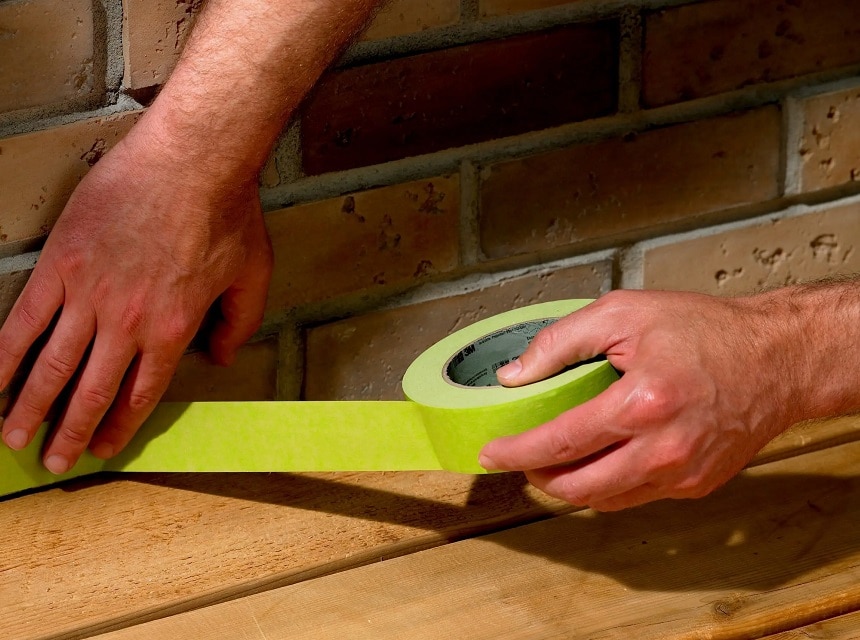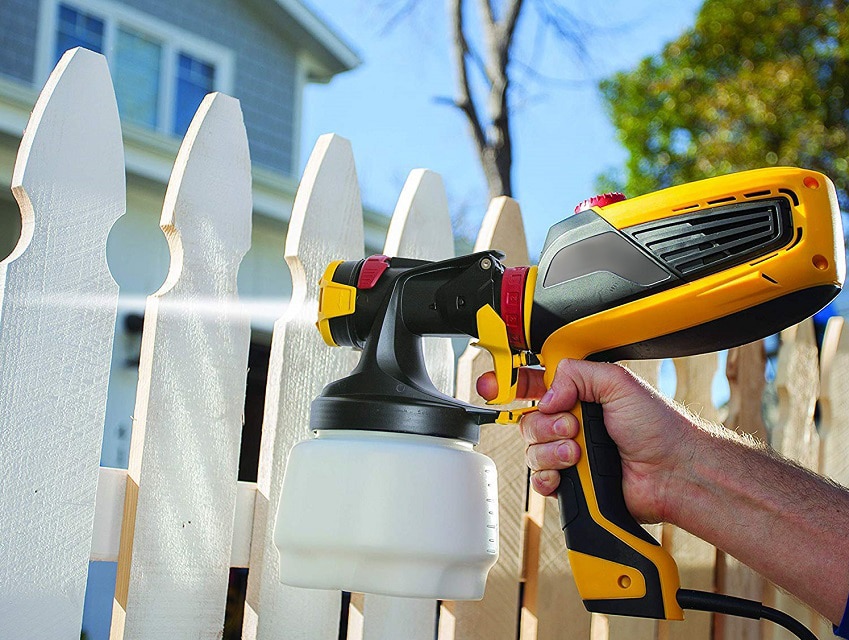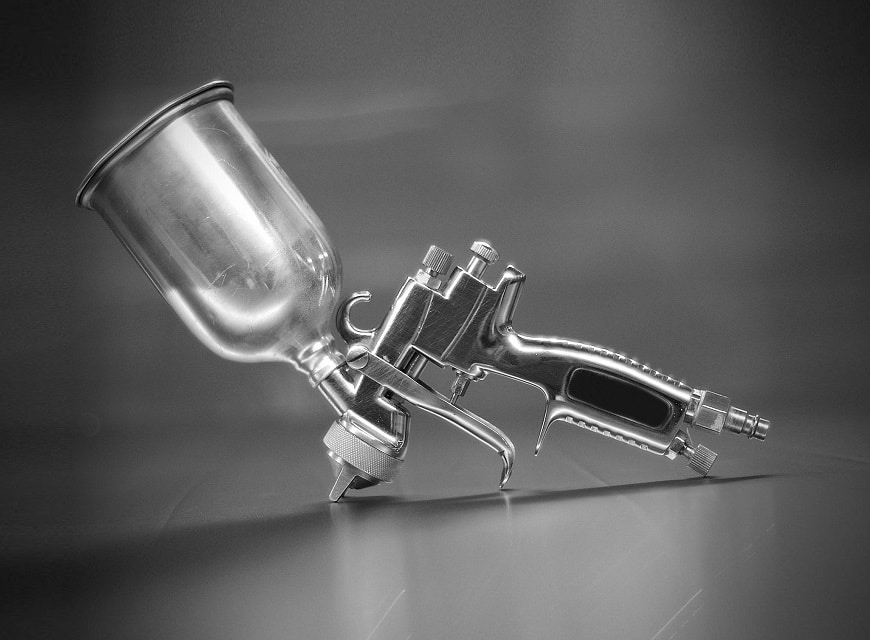Benchtop jointers are similar to their big brothers, but are small and portable. Although their dimensions don’t allow you to flatten extra-long pieces of wood, high-quality benchtop jointers have enough capacity to get your casual flattening done. But what makes the best benchtop jointer? We dug through the key features to figure it out.
A motor and a table are the key parts of any jointer. A powerful motor means enough RPM to deliver a smooth result and ensures great performance and running time. But there’s much more to keep in mind. Although motors they feature can have practically the same specs, different benchtop jointers can perform differently due to other components such as cutterhead design and general build. We picked out seven benchtop jointers with best characteristics available on the market. To make your choice easier, we examined several most popular items and read through hundreds of customer reviews and tens of specifications – doing the heavy lifting of researching jointers so you don’t have to.
The result is a list of seven of the best benchtop jointers on the market with the Porter Cable PC160JT 6 Inch Variable Speed Bench Jointer on the top, complete with detailed descriptions. The table below introduces and briefly compares our picks, and you can find details about each of the jointers below. Then, check out our buying guide to learn more about the important features to look for in the best benchtop jointer.
This jointer from Porter Cable has sadly been discontinued, but can still be purchased online – which is good news considering the quality of the product.
Although the cutterhead uses the more common two-blade head than a preferable spiral blade head, this jointer makes up for it with adjustable motor speeds and a large 3” cutterhead diameter. The cutterhead motor is fully adjustable from 6,000 RPM to 11,000 RPM, which translates to between 12,000 to 22,000 cuts per minute. As with many jointers, users found that the stock blades wore out quickly and needed to be replaced after only a few uses. The table itself is made of steel rather than cast iron, but most users found it plenty sturdy for the wood being fed into a benchtop unit.
The fence is made of a lighter aluminum, which did not offer the same stability as the table when working with heavy hardwoods. In addition, the adjustment knobs are made of plastic, which made the fence feel even less durable. However, users appreciated having stops at 45° and 90° for working on different projects.
What sets this benchtop jointer apart from others is that it features a 4” dust port. This is an oversized port compared to the more common 2.5” dust port and offers the ability to swallow woodchips whole without clogging.
This benchtop jointer from Shop Fox is designed with precision in mind and sports a low price targeted at hobbyist woodworkers. The machine is built with fully cast-iron infeed and outfeed tables and fence, which makes it feel extremely stable even when working with heavy, six-inch wide hardwood boards. Of course, at 80 pounds this is not a machine that professionals will be transporting between job sites. The fence is easy to adjust and has angled stops at 45°, 90°, and 135° for making beveled edges.
The cutterhead uses the common two-blade design – part of what makes this jointer so low-cost – and has a fixed speed of 10,000 RPM. The cutting depth is easily adjustable, which is helpful for making precise cuts or beveled edges.
A great feature of this jointer is the integrated dust collection. The jointer has a built-in 2.5-inch dust port and comes with a collection bag, so it is easy to set up and does an excellent job of keeping sawdust in the bag and out of your workspace.
When purchasing this jointer, it is important to check the tables – some users found manufacturing defects in which the infeed or outfeed tables were not level. Thankfully, this defect is covered under the two-year warranty.
This benchtop jointer from Powertec is a bargain given the fully cast-iron construction. This durable and sturdy construction dampens vibrations, although the added weight means that it is not a particularly mobile jointer. The cast iron fence is sturdy and can be easily adjusted between 45°, 90°, and 135°. However, some users found that despite the quality materials, the jointer had some assembly issues that allowed for a slight wiggle in the table and drastically reduced its usefulness for perfectionist woodworkers. In addition, the jointer table is slightly shorter than competitor tables.
Unfortunately, Powertec did not follow up on their cast iron construction with a spiral blade – the cutterhead uses a two-blade design with a non-adjustable 10,000 RPM motor. Regardless, the cutting head features the same 1/8-inch cutting depth as its competitors and a maximum board with of more than 6 inches.
A very welcome feature of this benchtop jointer is the included dust port. Users found that this effectively captured dust and does a very good job of keeping your garage from filling up with sawdust.
In contrast to jointer with multi-year warranties, this jointer comes with only a 12-month warranty.
For users who want a heavy-duty benchtop jointer that is all but guaranteed to last a lifetime, this machine from Grizzly is a great option. The entire jointer is constructed of durable metal – the tables and fence from cast-iron, and all the remaining adjustment knobs and parts of steel. The only plastic piece on the machine is the power switch. Of course, at over 80 pounds, you’ll want to set aside a dedicated bench space where this machine will never need to be moved after purchase.
The table is a few inches longer than on competitor benchtop jointers, which gives a little extra space for working with long boards. The only downside is that adjusting the infeed board requires a difficult adjustment from underneath the table. Many users found that the bolts required for this adjustment were so tight as to require a torque wrench, which can be off-putting to users who care more about flexibility than durability. The fence, thankfully, is easy to adjust between 45°, 90°, and 135° stops using an adjustment knob.
The cutterhead is on par with most benchtop jointers. It uses a two-blade design with a 1/8” maximum cut depth and a fixed operating speed of 10,000 RPM. Users found that the stock blades needed to be replaced quickly, although this is the case for many benchtop jointers.
This machine also features integrated dust collection through a 2.5” dust port. The dust collection system is very effective at keeping sawdust out of the air, which makes it easier to work with the jointer in an enclosed garage.
Our all-around favorite benchtop jointer was this model from Cutech. At an extremely reasonable price for the non-professional woodworker, this jointer offers almost all the features you could want in a benchtop unit.
First, this was the only benchtop jointer on our list of top picks that uses a spiral cutterhead, which allows this unit to run much more quietly than comparable jointers and increases the durability of the blade. Although the cutterhead does not feature adjustable speed, the 11,000 RPM motor is great when you need to get through a lot of boards quickly. Combine these features with a 1/8” cut depth and the result is that this jointer is extremely efficient at straightening board after board when you have a lot of work to be done.
The fence is made of cast aluminum and the table of steel, rather than the cast iron that is typically favored for high-quality jointers. However, despite the lightweight feel of these materials, users found that the fence held up well even when impacted by six-inch hardwood boards. The fence is adjustable from 90° to 135°, but cannot be tilted tighter than perpendicular to the table.
The jointer comes with a two-year warranty and, more important, Cutech stands behind their product. Customers rave about the customer service that Cutech provides, which means peace of mind when making a significant investment in a jointer.
This benchtop jointer from WEN is another cast-iron machine intended more for hobbyists working in a home garage than for professionals moving between job sites.
The infeed table, outfeed table, and fence are constructed of cast-iron and offer plenty of stability and durability for working with even thick hardwood boards. The fence is easily adjustable from 45° to 90° to 135° for adding beveled edges in your work, and the precision adjustments on the cutterhead make it easy to fine-tune your cuts. Note, though, that some of the adjustment knobs are made of plastic rather than iron, and many users noted that these plastic parts were far less durable than the rest of the machine.
The cutterhead itself uses the common two-blade design and features an especially large-diameter 6-1/8” rotor – nearly the entire width of the cutting table. At a fixed speed of 10,000 RPM, this cutterhead is on par with most of the other two-blade designs on the market. However, in contrast to many other benchtop jointers, this machine has a maximum cut depth of 1/10” as opposed to the more common 1/8”. The shorter cut depth means that it may take more passes through the jointer to achieve a straight edge, especially for thick boards.
A nice feature of this jointer is the integrated dust collection system, which uses a 2.5-inch dust port connected to an included collection bag. Users loved this system and found that it was extremely effective at keeping sawdust from collecting around the jointer.
Our runner-up benchtop jointer, this unit from Delta Power Tools has a lot to offer. It is slightly smaller than its competitors, but nearly twice as heavy. The reason is the cast-iron fence and table, which make this jointer extremely sturdy – they even serve to reduce vibration when the machine is running – and durable. Woodworkers who need precision and appreciate machine build quality absolutely love this cast-iron construction, although it can rule out this jointer as a mobile tool to bring to on-site projects. The fence itself runs nearly the length of the table and is adjustable between 45° and 90°.
Where this machine falls short of the jointer from the Cutech is primarily in the cutterhead, which uses a two-blade design rather than the more quiet and durable spiral blade design. The cutterhead is also smaller and runs slightly slower, at 10,000 RPM. Together, these specifications make the jointer less efficient for high-volume jobs that our top pick.
Another plus to this jointer is the five-year warranty, which gives peace of mind that this machine will be a part of your woodworking for many years to come.
Choosing the right benchtop jointer, even from the seven excellent models on our list, can be difficult without knowing what features to look for. In our buying Guide, we’ll cover all the make-or-break features that set the best benchtop jointers apart from the competition.
Two common questions among woodworkers who are new to jointers are how to use them and how they differ from planers. Benchtop jointers allow you to take a curved or warped piece of wood and straighten the edges so that they are perfectly level. Getting the edges straight can take a few runs across the blade, but the wood is kept on track using a fenced-in runway so the cuts are precise.
[wpsm_box type=”blue” float=”none” text_align=”left”]
A jointer works similarly to a planer, but achieves a slightly different purpose – a planar is used when you want to cut two already straightened pieces of wood to the same thickness. Because these two machines operate similarly, larger (non-benchtop) jointers are often combined with planers in a single unit.
[/wpsm_box]
How a jointer is constructed makes all the difference in how you can use it.
First, the ideal motor should be 1HP or slightly above, although some even suggest that 1/2HP would be enough. There’s no point in straining after something more powerful until you’re not trying to hog off too much wood.
The dimensions of jointers vary widely – from benchtop units that have a footprint of a few square feet to industrial-sized units that could take up an entire garage. The table width and length also vary, and these measurements are very important to consider when thinking about the types of projects you will be using your jointer for. The width of the jointer is the primary limitation on how wide a board you can work with – most benchtop jointers accept widths up to around six inches. If you are frequently working with long planks, look for a jointer with a long wood track.
The fence, which is the material perpendicular to the wood track that helps to guide boards into the cutting head, also comes with potential options. Many fences are adjustable in their tilt angle, with stops at specific angles. More stops means more flexibility in working with the fence at an angle to your boards. In addition, some fences run the entire length of the jointer, while others cover only the area around the blade.
[wpsm_box type=”red” float=”none” text_align=”left”]The material of your jointer also matters for durability and ease of use. The best jointers feature cast iron tables and fences that minimize vibrations, although these can be quite heavy if moving the jointer between job sites is important to you.[/wpsm_box]
The cutterhead speed, normally rated in rotations per minute, directly affects how fast you can feed boards through the jointer and eventually how smooth you can get the lumber. Considering that each board typically requires multiple runs through the jointer to fully straighten edges, feeding speed can be an important time-saving consideration for woodworkers who do a lot of joining.
The cutting head is obviously a critical piece of any benchtop jointer, and not all cutting heads were made equally. Spiral cutting heads feature four blades and operate extremely quietly, but are often significantly more expensive. Dual-bladed jointers are more common. In addition, the blades themselves can vary significantly in quality – low-quality blades will need to be replaced sooner, which can add to the effective initial cost of the jointer.
The two factors that determine how many runs through the jointer it will take to straighten a wooden board’s edges are the cuts per minute and maximum cut depth. Cuts per minute is equal to the cutterhead speed multiplied by the number of blades, and more cuts per minute means more straightening effect with each pass through the jointer. The maximum cut depth describes how deeply the cutterhead penetrates into the board, with a larger cut depth requiring fewer passes to achieve a straight edge.
If you’re working inside a garage or other enclosed space, having a benchtop jointer with built-in dust collection can be a lifesaver. The port and bag sizes of these integrated dust collection mechanisms can vary, which influences how large the waste wood can be without clogging the mechanism and how frequently the outflow needs to be emptied.
Learn how to use a wood jointer from this video
A benchtop jointer can be one of the most loved tools in your garage as you take on woodworking projects, since it offers an easy way to salvage old boards and cut new boards to perfectly straight edges. There are a huge variety of benchtop jointers on the market, but getting the right one for your needs is critical given how central it is to making a project successful. We took the hard work out of digging through all of the benchtop jointers out there by picking our seven favorite machines. Plus, thanks to our buying guide, you have the information you need to decide how specific features of different benchtop jointers can fit into your next project.






I was so excited to see the Cutech jointer on the top of your list) the thing is my grandpa’s been using it for several years and he totally loves it. I decided to read the article because I’m going to buy a benchtop jointer for myself, but it seems like it’s my density to choose the Cutech one))
Lol, how cool is that) It’s a great tool indeed, however, don’t overlook other models, all of them have their advantages, so maybe something else will even better suit your needs
Where to buy a benchtop jointer? I mean I have a Hardware Store here in Miami, just across the street, but not sure they have these and if the prices are reasonable
I’d recommend you go there or call them to just check their prices. I bet they have benchtop jointer planers, but doubt about the price range. Use our links to Amazon, and compare the prices, however, I’m sure the Amazon’s ones are lower due to transportation and storage spendings absence.
To be honest, all these products look the same to me. I’m a total beginner at this, but sure thing want the best benchtop jointer possible. Which would you recommend?
I’d say our “Best All-Around Benchtop Jointer” product has got its nomination for a reason. So you won’t go wrong with it even if you’re a total beginner.